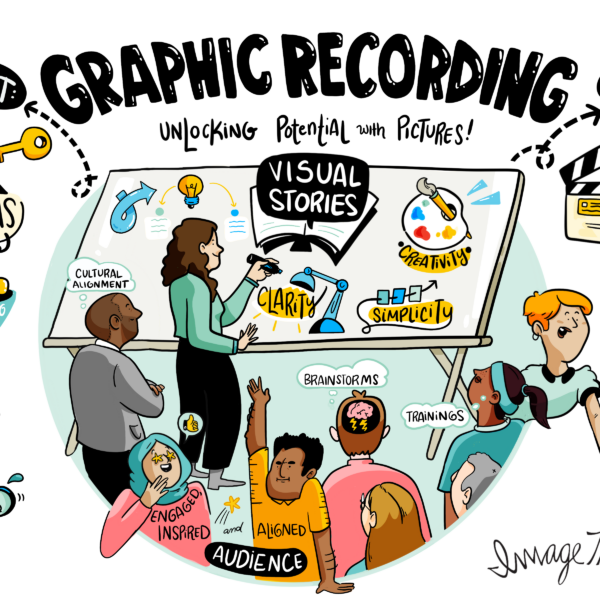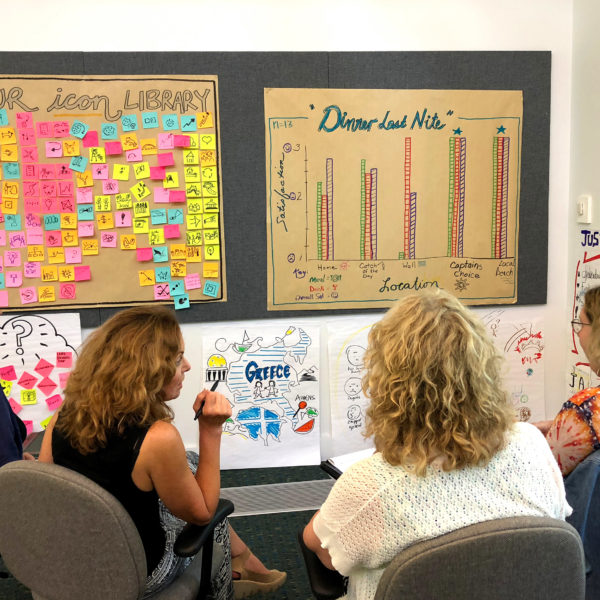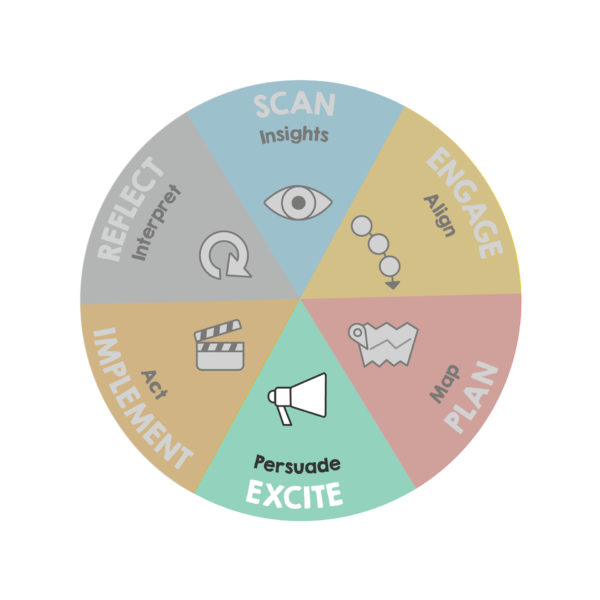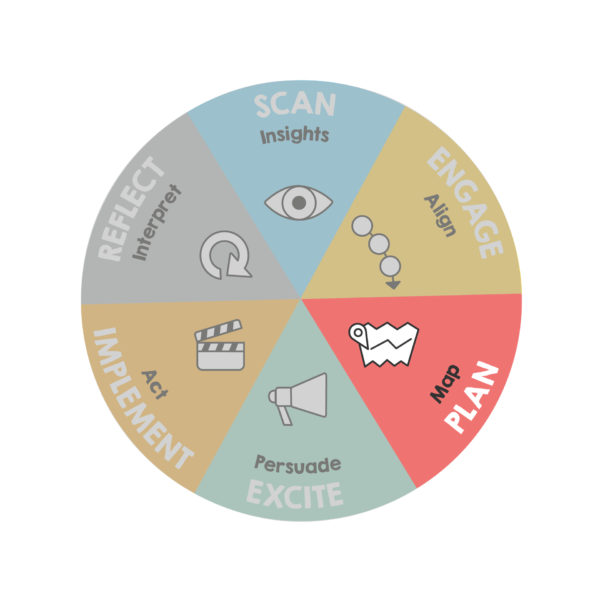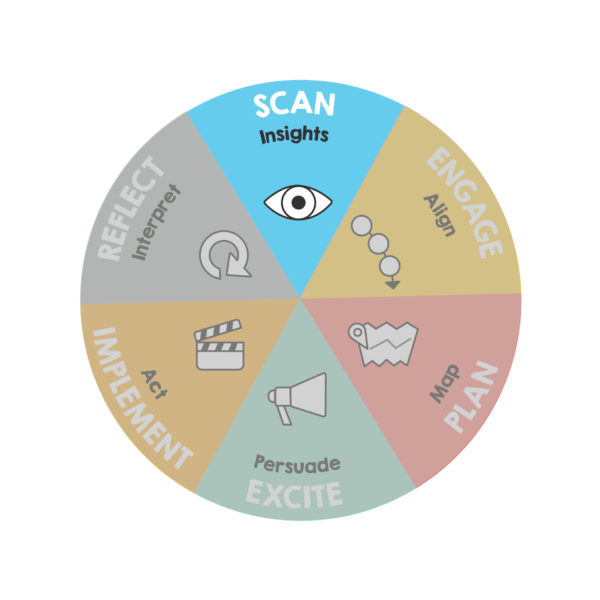The ImageThink Method™ was uniquely developed to help lead organizational transformations, from culture shifts to strategic plans to launching a new brand. Developed by ImageThink CEO and Founder Nora Herting, this proprietary framework for applies visual theory, graphic facilitation, and design thinking in strategic ways to move major initiatives forward. The end result isn’t just a successful project, but a more engaging, collaborative, and creative process.
Our unique methodology fuses behavioral psychology, design thinking principles, and the neuroscience of visual storytelling into a unique framework for leading business transformations large and small.
The Role of Behavioral Psychology
In 1947, Fritz Perls, one of the founders of Gestalt Therapy, developed what he called the Organismic/World Metabolism, which we now call the Cycle of Experience, as a way to describe how we interact with the world around us.

The seven stages of Perls’ Cycle of Experience go as follows: (1) We subconsciously perceive an environmental occurrence with our senses, which (2) brings it into our conscious awareness. (3) We devote energy to determine whether it is important to us, and if so, (4) we take action. (5) This action results in us in some way making contact with our environment, until we have (6) satisfied or resolved our curiosity, and (7) withdrawn. The example below may help put that in plain English.
You smell an unexpected odor, which you identify as burning bread. You are reminded that you were making toast in the oven, so you move to the kitchen. You open the window, turn off the oven, and move the blackened bread from the oven to the trashcan, at which point you return to what you were doing (or make more toast).
One of the key points laid out by Perls is that his Cycle of Experience is not fixed to a certain timeframe. It can happen in moments, as in the example above, or over weeks or even a lifetime.
Design Thinking Process
In the words of Tim Brown, Executive Chair of IDEO, “Design thinking is a human-centered approach to innovation that draws from the designer’s toolkit to integrate the needs of people, the possibilities of technology, and the requirements for business success.”
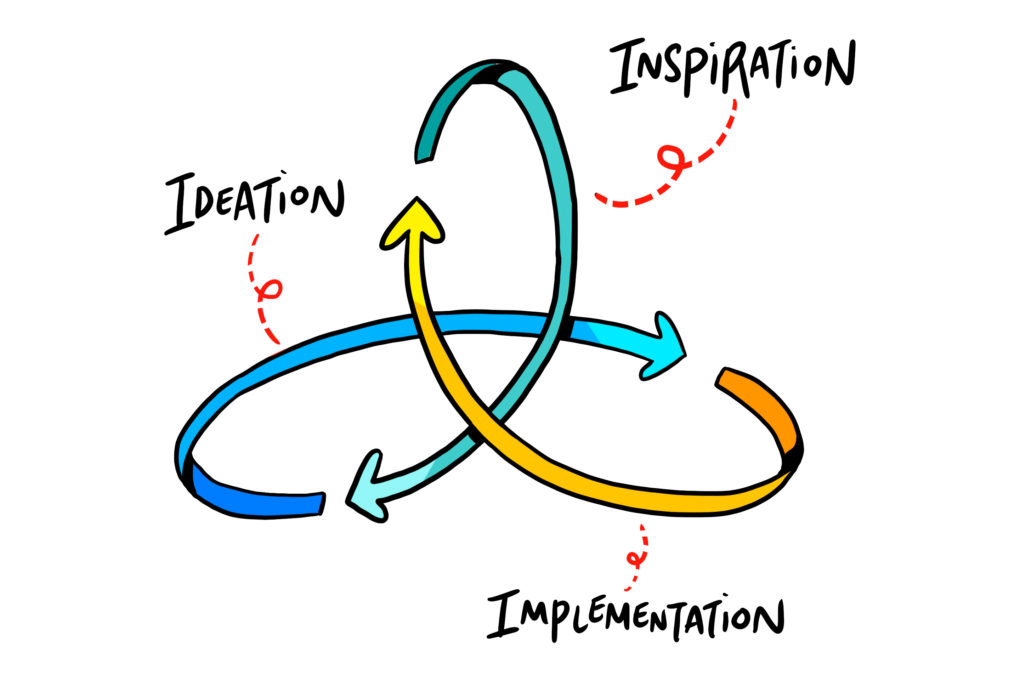
These design thinking principles have served as a major influence on The ImageThink Method™. Perhaps the three most important elements are that design thinking practices are human centered, iterative, and non-linear.
As human-centered tool, Design Thinking begins with Empathy and Definition. In these first two stages, the design thinker listens, interviews, and collects information about the state of things (Empathize), and then evaluates these observations to define goals and challenges, as well as assign roles (Define).
The next three stages, Ideation, Prototyping, and Testing, all work together as iterative ways to solve the problem identified earlier. Ideation encourages optimism, divergent and convergent brainstorming, and prioritization of possible solutions. During the Prototyping stage, mockups, storyboards, or physical models are designed and created, before they are evaluated and iterated upon in the Test stage.
Importantly, while these stages naturally move forward from one to the next, the entire process is cyclical, repeatable, and regularly involves jumping back to earlier steps with new information and learnings. As with Perls’ Cycle of Experience, the design thinking projects are not locked into specific timelines, and this process can be completed over the course of days, weeks, or years.
Visual Theory and The ImageThink Method™
As graphic recorders and advocates of visual leadership, our proprietary methodology unsurprisingly leans heavily on the science of visuals. We know, for instance, that 70% of the human brain’s sensory inputs are dedicated to processing visual stimuli, and that we’re hard-wired to anthropomorphize objects and images as a survival mechanism.
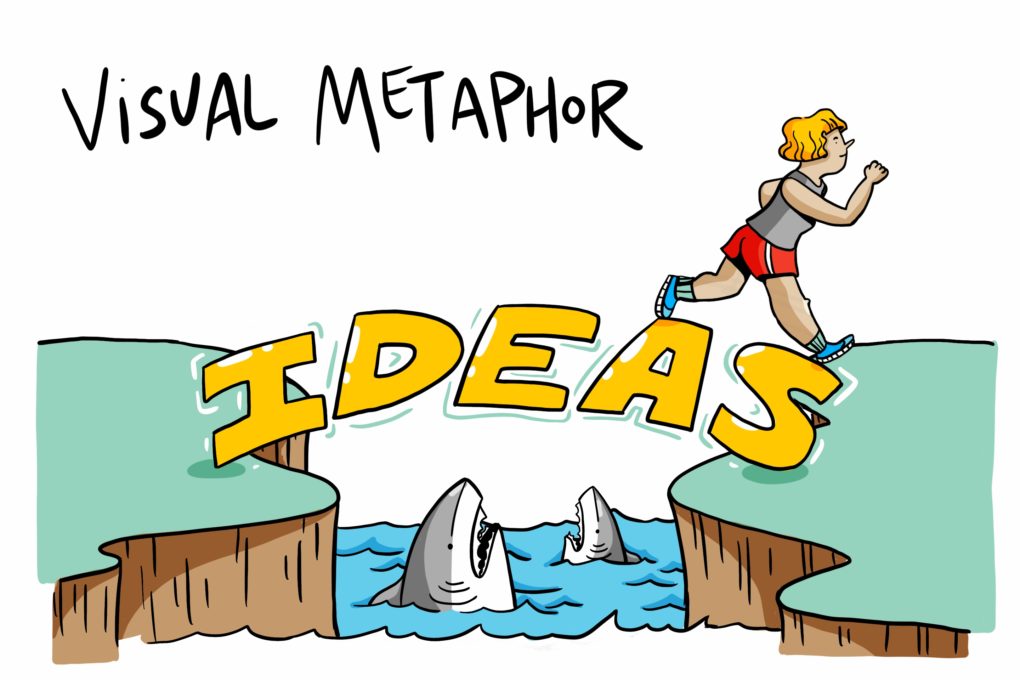
Armed with this knowledge, ImageThink’s graphic recorders and graphic facilitators apply the tenets of color theory, composition, and typographic hierarchy to visually summarize and communicate, in real time, complex ideas by utilizing visual metaphor.
Dependent on where we determine a client is along The ImageThink Method™ continuum, we have a variety of visual tools including whiteboard exercises, empathy maps, visual pitch boards, graphic recording, and executive summaries.
Want to see The ImageThink Method™ in action? Use the chat function, or schedule a demo today!
